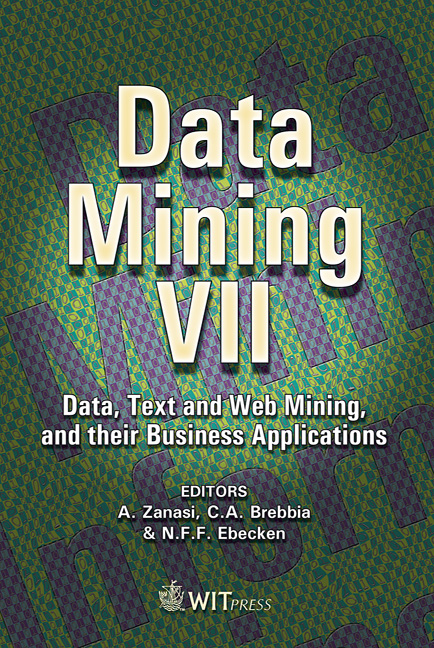Analysis And Development Of Latent Semantic Indexing Techniques For Information Retrieval
Price
Free (open access)
Volume
37
Pages
10
Published
2006
Size
357 kb
Paper DOI
10.2495/DATA060201
Copyright
WIT Press
Author(s)
M. Bottello
Abstract
The majority of information in a company is often useless or not equally interesting to everybody. The set of techniques called Analytical Business Intelligence provides a valid way to tackle the needs of information classification and of knowledge extraction that naturally arises inside a company. This paper proposes a suitable solution to make the digital resources useful, identifiable and accessible, through the creation of a Knowledge Base, i.e. a company-wide Intranet where techniques of Information Retrieval used by the Web are applied in order to reach a higher level of efficiency. Keywords: wide-Intranet, rank, nodes, arcs, oriented graph, document, Authority, Hub, eigenvalue and eigenvector. 1 Introduction This article suggests the development of an Intranet as a solution to the problem of information overload in companies. Moreover our analysis points out that an Intranet can be a tool to transform the business information into organizational knowledge. The aim of Intranet is to classify documents without their direct analysis and to exploit the suggestions that the hypertextual nature of the above-mentioned documents provides. The first assumption that had been made is the possibility to adapt to Intranet the techniques developed in the context of Internet, even if the two backgrounds have several affinities. After having examined the differences between the two contexts, we used them to show that the techniques introduced by Kleinberg could be just as valid in different contexts and could lead to considerable results. As far as the methods of document searching are concerned, that through the analysis of the Information Retrieval algorithms that use sophisticated mathematical methods, we were able
Keywords
wide-Intranet, rank, nodes, arcs, oriented graph, document, Authority, Hub, eigenvalue and eigenvector.





